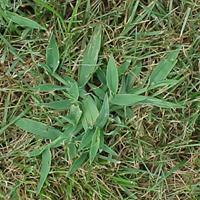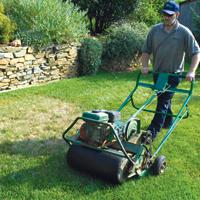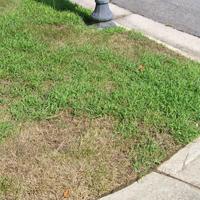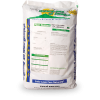The arrival of springtime means budding flowers, blossoming trees, and green grass. Unfortunately, with this abundance of new growth comes sprouting weeds as well. Crabgrass in particular is a weed that continues to frustrate homeowners year after year. By knowing how a weed grows and a few tips on natural prevention, you'll know what you can do about crabgrass without chemicals.
What Is Crabgrass?
Crabgrass is an annual weed whose seeds germinate during spring and summer. Crabgrass germination occurs when soil temps reach 55°- 65°F at a 3" depth for 5 consecutive days. Un-germinated seeds can wait in the soil for up to thirty years before sprouting. Given the fact a single crabgrass plant can produce 150,000 seeds during the growing season, it's easy to see why controlling it is difficult.
Why Do I Have So Much Crabgrass?
Crabgrass favors sandy, compacted soil where the grass is in a weakened, thinned condition. Bare, thin lawns allow sunlight to directly hit the soil, which is an ideal condition for crabgrass germination. In addition, weeds like crabgrass thrive when your lawn has excess water and phosphorus levels.
How Can I Prevent Crabgrass?
The key to crabgrass prevention is to stack the playing field in favor of your grass; in other words, give it ideal growing conditions, and your grass will choke out weeds. Of course, you can make all the conditions favorable for turf-grass, but you also need to ensure you have the correct turf grass for your area. For example, bluegrass is a cool-season grass best suited for the northern US and won't thrive in southern states.
Providing ideal growing conditions for your grass is very important and most are simple cultural changes. First, adjust your mower's height to allow your grass to grow to its optimal level. The higher your grass is above ground, the longer the roots are underground; this means less room for anything else to take root. Aeration and overseeding can also decrease the presence of crabgrass, because it adds grass seed and favorable grass conditions to your lawn. Lastly, ensure your lawn's soil has the proper amounts of nutrients via a simple soil test. Soil testing will help you determine what compounds and nutrients your lawn is lacking so you can fortify your lawn with a natural fertilizer, which will correct any inequities.
How Can I Kill Crabgrass?
Don't give up if you've tried all the cultural practices and natural crabgrass controls we recommended above. If crabgrass is still kicking your butt — you still have options. First, you can apply a pre-emergent fertilizer before the germination period to organically control crabgrass. If it is mid-summer and the crabgrass is already fully grown, you can wait it out and then attack in full force next season or treat it with an herbicide specifically labeled for crabgrass control. Spraying herbicidal weed control is always a last-ditch effort and should be done so with care. When using any type of control materials always follow label directions, and only spray the troublesome areas as opposed to treating your entire lawn.
If you would like assistance with removing crabgrass from your yard, contact a local natural lawn care professional. NaturaLawn of America has provided homeowners with safer and effective, organic-based lawn care since 1987.





